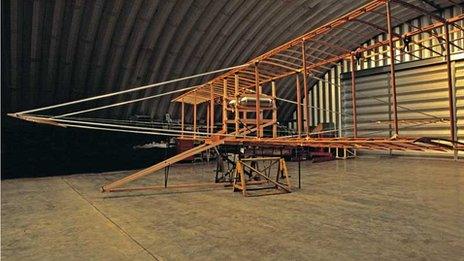Waterbird: Replica of UK's first seaplane flies over Windermere
- Published
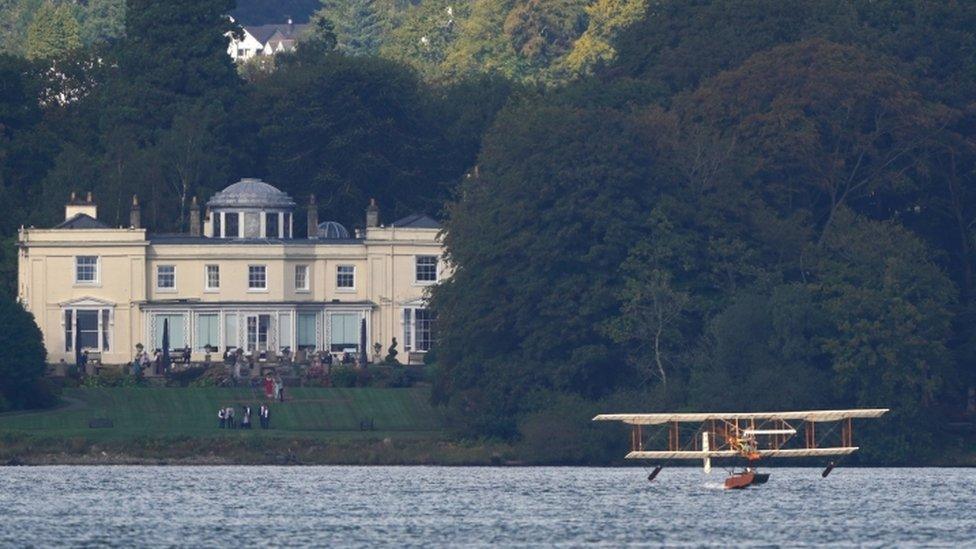
The replica project stalled in 2013 when it ran out of money, and took 13 years in all to complete
A replica of the UK's first ever seaplane has made its inaugural public flight, 111 years after the original flew for the first time.
Waterbird took off and landed safely on Windermere on 25 November 1911, but was destroyed four months later when it was crushed by its hangar in a storm.
Work on the replica began in 2009, but in 2013 the project fell short of £160,000 and fundraising began.
Nine years later the completed plane has been flown at Windermere.
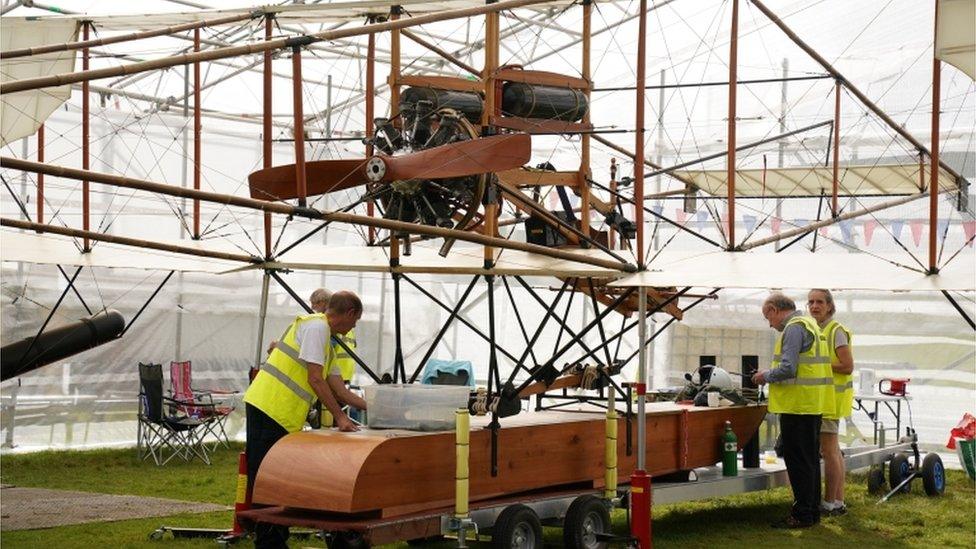
The replica Waterbird had secret trials in the Lake District in June
The 35ft (10.6m) replica was built at Wickenby Airfield in Lincoln, spearheaded by former RAF serviceman Gerry Cooper.
It was made from similar materials to those of the original including spruce wood, bamboo and wires.
It does however, have a modern engine.
In June, display and test pilot Pete Kynsey took the replica on its maiden voyage in secret trials on Windermere.

The flight marked the climax of a 13-year project to create an exact copy of Waterbird - aside from the modern engine
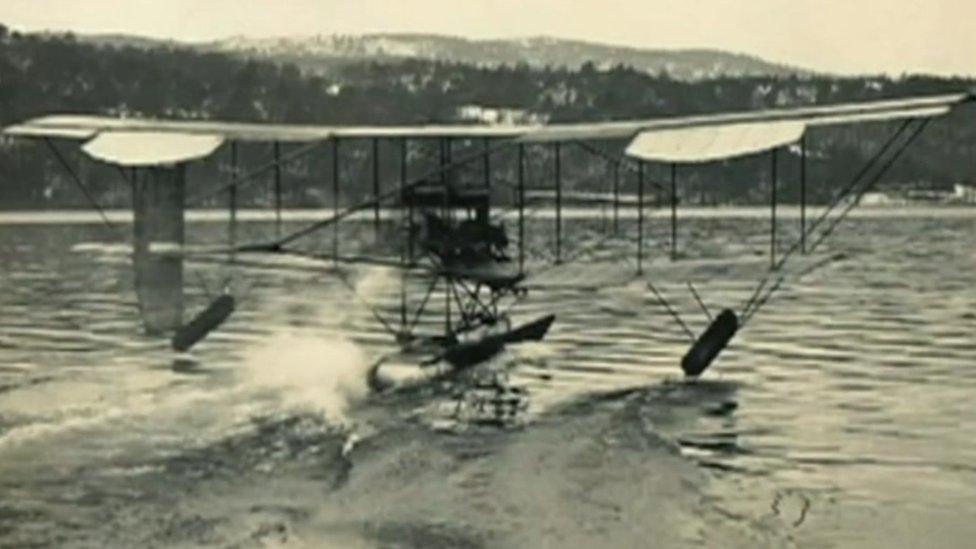
Waterbird, piloted by Herbert Stanley Adams, made history on 25 November 1911
Special permission was granted by the Lake District National Park Authority, including an exemption from the normal speed limits on the lake.
Speaking ahead of the flight, Ian Gee, director of organisers Wings Over Windermere, said: "It's a thrilling opportunity to step back in history to the very earliest days of aviation when pioneers pushed the boundaries of what was possible through innovation and imagination.
"Waterbird has a lasting legacy that transformed seaplane designs."
Waterbird was commissioned by Edward Wakefield of Ancoats, Manchester, as a landplane and converted to a seaplane at Windermere, where the pilot was Herbert Stanley Adams.
Author Beatrix Potter opposed the noisy test flights near her home and was active in a campaign to have them stopped.
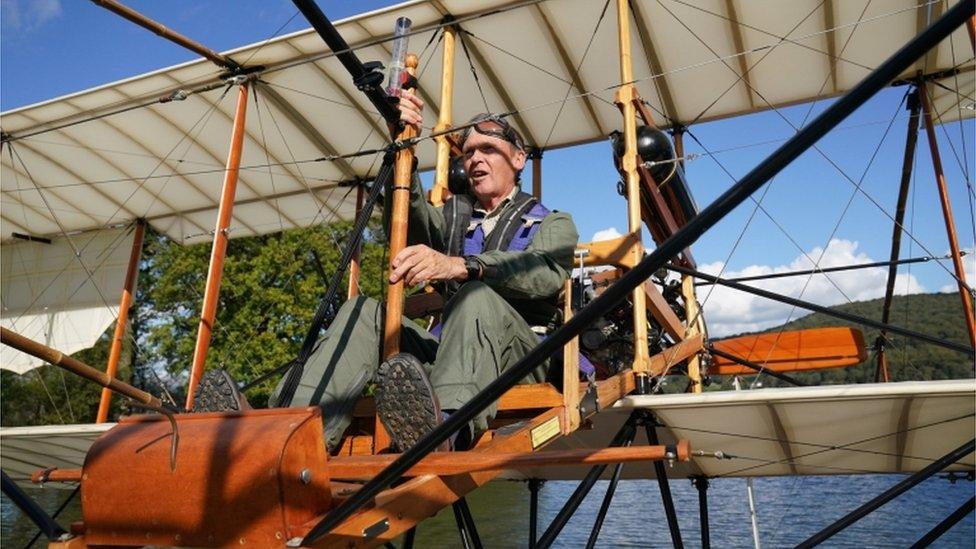
The 35ft long aircraft, has a wingspan of 40ft and weighs just 1,000lb
The campaign was overruled by the government, including First Lord of the Admiralty Winston Churchill, who regarded the test flights as vital to developing the nation's air force.
The idea of making a replica was first mooted by Richard Raynsford, the great-great nephew of Captain Wakefield, in a letter to The Westmorland Gazette newspaper.
The ultimate aim of Wings Over Windermere is to display Waterbird in a heritage centre on the lake shore, where it is hoped that regular flights might be arranged.

Follow BBC North East & Cumbria on Twitter, external, Facebook, external and Instagram, external. Send your story ideas to northeastandcumbria@bbc.co.uk, external.
- Published25 November 2013
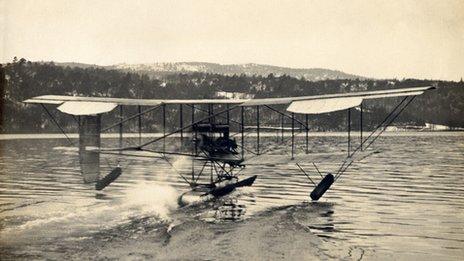
- Published24 September 2012
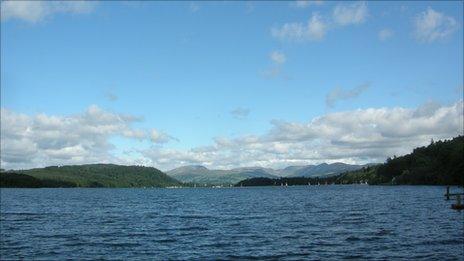
- Published24 November 2011
